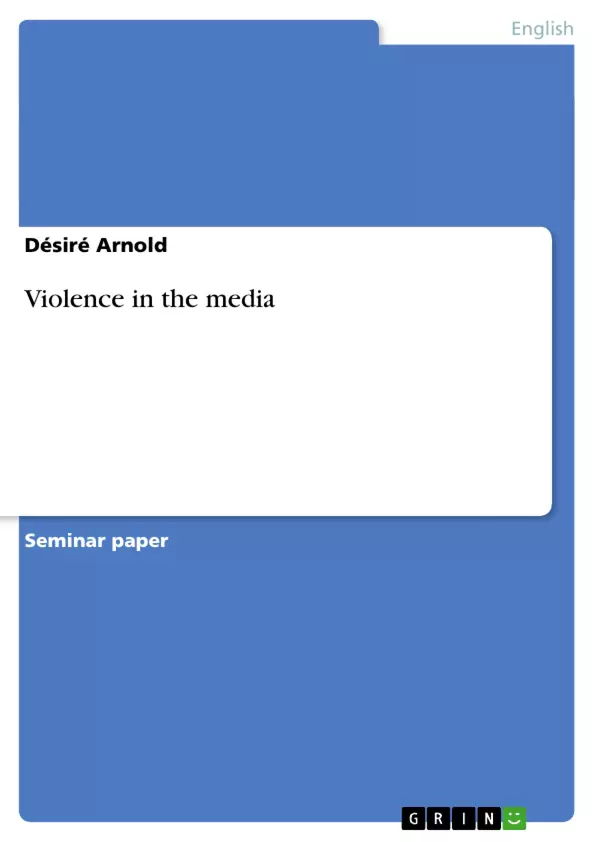What is ‚violence’?
Kunczik says it is “an intentional physical or/and psychical damage to a person, a living being or a thing, through another person.”1(15) Theunert considers violence only between human beings. “Offenders and victims are always one or more persons.”2(89) Kunczik says one also could differentiate between concrete violence and fictional violence, as well as between natural and artificial violence. Concrete violence is about shown behaviour, which results in violence, either physical or psychical. Fictional violence is only the presentation of it. And so natural violence means the real and genuine violence, for example shown in movies. And at last the artificial representation means the un-real representation, for example shown in cartoons.
2. History of Violence in the Media
Historically spoken, violence in the media is not a phenomenon of the present; already the ancient Greeks were confronted with it. Kunczik (19) states that each new medium was judged negatively in the beginning. It all started with Plato. In his work “Politea” he accuses tales and myths to stand in contrast to an honourable adult life, and so children and youngsters should be kept away from these. At this point Aristotle, a former student from Plato sets in. He formed a thesis called thesis of catharsis. 3 So one can see that the topic violence already derives from the ancient world. For example Homer and his “Odyssey” as well as Aneas and his work “Aneis”. Also the Grimms and Busch made use of violence in their tales. This goes on to Shakespeare and his plays, for example in “Hamlet” they fight, an act of violence, or “Macbeth”. Goethe as well used a kind of violence, when his “Werther” 4 commits suicide. Critics of that time feared many suicides (and many suicides are said to have happened after reading this work).
Inhaltsverzeichnis (Table of Contents)
- General Aspects of Violence
- History of Violence in the Media
- Examples/ Effects
- Thesis of Catharsis
- Stimulation Thesis
- Habitualisierungsthese
- Thesis of Suggestion
Zielsetzung und Themenschwerpunkte (Objectives and Key Themes)
This text aims to explore the complex relationship between violence and the mass media. It examines the historical development of violence in various media forms, from ancient tales to modern-day television and film. The author delves into the potential effects of media violence on audiences, analyzing theories of catharsis, stimulation, and habituation.
- The historical evolution of violence in media
- Theories of media violence effects (catharsis, stimulation, habituation)
- The role of socialization in shaping media reception
- The impact of individual and social contexts on violence perception
- The ethics of depicting violence in media
Zusammenfassung der Kapitel (Chapter Summaries)
- General Aspects of Violence: This chapter defines violence, exploring different types and categorizations. It discusses the concept of both concrete and fictional violence, as well as natural and artificial representations.
- History of Violence in the Media: This chapter traces the historical evolution of violence in media, starting with ancient Greek literature and moving through various media forms. The author examines how different eras have perceived and reacted to violence in media.
- Examples/ Effects: This chapter focuses on the potential effects of media violence on audiences, particularly exploring the theories of catharsis and stimulation. It analyzes the validity of these theories and discusses the role of socialization in shaping individual responses to media violence.
Schlüsselwörter (Keywords)
Key terms and concepts explored in this text include violence, mass media, catharsis, stimulation, habituation, socialization, media effects, individual and social contexts, and the ethical representation of violence.
- Arbeit zitieren
- Désiré Arnold (Autor:in), 2003, Violence in the media, München, GRIN Verlag, https://www.grin.com/document/22514



